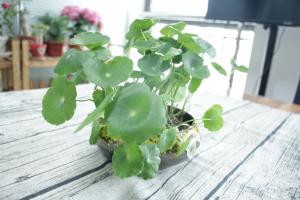Can Tomatoes be Planted in Wet Soil?
Tomatoes are one of the most popular vegetables grown in gardens all around the world. They are known for their versatility in the kitchen and their nutritional value. The success of a tomato crop largely depends on the soil conditions in which they are grown. One common question that gardeners ask is whether tomatoes can be planted in wet soil. The answer is a bit complicated and depends on various factors.
Understanding Wet Soil
Wet soil is soil that is saturated with water. It can result from heavy rainfall, inadequate drainage or watering, or a high water table. Waterlogged soil can harm plants since the water deprives the roots of air, making it difficult for them to absorb nutrients from the soil. Wet soil can also attract pests and lead to disease, which can kill young plants.
The Effect of Wet Soil on Tomato Plants
Tomatoes are sensitive plants and do not tolerate wet soil well. Roots in wet soil become waterlogged, which restricts the airflow to the roots. This leads to reduced nutrient uptake since waterlogged roots cannot absorb nutrients as effectively. Wet soil also promotes the growth of fungi, bacteria and other pathogens that can cause disease, rot and other plant health problems. All these factors can lead to a decrease in tomato yield and impact the plant's overall growth and health.
Factors that Affect Whether Tomatoes can be Planted in Wet Soil
Despite the negative effects of wet soil, there are some factors that can influence whether tomatoes can be planted in wet soil. These include:
Soil Type: Clay soils tend to be denser and more likely to become waterlogged compared to sandy soils. Sandy soil, on the other hand, drains water more easily and is less likely to lead to waterlogged soil.
Drainage: Proper drainage can greatly reduce the risk of waterlogged soil. Good drainage can be achieved by adding organic matter like compost, mulch, and well-rotted manure into the soil. Other methods include installing drainage tiles, trenches, or raised beds.
Rainfall: Adequate rainfall is essential for plant growth, but excess rainfall can lead to waterlogged soils. If rainfall is consistent and heavy, it may be necessary to wait until the soil dries out before planting tomatoes.
Tips for Planting Tomatoes in Wet Soil
If you decide to plant tomatoes in wet soil, there are a few things you can do to help ensure success:
Choose Varieties Wisely: Some tomato varieties are more resistant to waterlogged soil than others. Varieties like Victoriana, Gardeners Delight, and Latah have been known to perform well in damp soil conditions.
Use Raised Beds: Using raised beds can help to keep tomato roots from becoming waterlogged. Raised beds allow water to drain away from plant roots, ensuring good drainage through a layer of soil that is above the surrounding soil.
Amend Soil: By amending soil with organic matter, you can make it more resistant to waterlogging. Organic matter like compost can improve soil structure, creating space for air and drainage.
Conclusion
In conclusion, planting tomatoes in wet soil is not recommended since it can lead to a range of problems that can impact plant growth and crop yield. However, with careful consideration of soil type, drainage, rainfall, and variety selection, it is possible to grow healthy and productive tomato plants even in less than ideal soil conditions. By following the tips outlined in this article, you can increase your chances of successfully growing tomatoes in wet soil.

 how many times do yo...
how many times do yo... how many planted tre...
how many planted tre... how many pine trees ...
how many pine trees ... how many pecan trees...
how many pecan trees... how many plants comp...
how many plants comp... how many plants can ...
how many plants can ... how many plants and ...
how many plants and ... how many pepper plan...
how many pepper plan...





























